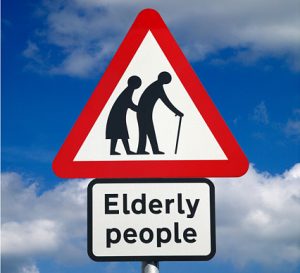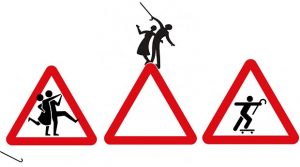I went to the National Gallery of Ireland last week. There’s an exhibition of portraiture on at the moment celebrating the Zurich Portrait Prize. It offers an interesting study of the human face as it really is, rather than the airbrushed versions we generally see. Because many of the subjects are famous, they tend to be older than the airbrushed celebrity shots we are used to seeing. These people are poets and politicians as well as ordinary people and even a few ‘warts and all’ self-portraits. The exhibition is an interesting gauge of what people really look like, especially women.
Dragana Jurišić (b.1975), Paula Meehan, 2018. Photograph 90x105cm © Dragana Jurišić.
The poet Paula Meehan photographed above, was born in 1955. Photographer Dragana Jurišić has chosen to portray an animated Meehan. The tell-tale signs of an ageing body are not masked in this photo, we see wrinkles and grey fly-away hair. But these features are not the ones that stand out. The photograph emphasises the movement of her hands and head in a double exposure shot that infers the vitality of her body and her mind. There is no stoop, no stick, no hesitancy in the shot.
The fact is that we all age differently. As children it is quite easy to distinguish a three-year-old from a thirteen-year-old, but as we get older metabolic age can often differ by ten or even twenty years. Just think of your own older friends and relations. It is far more difficult to tell their ages.
But younger people, the press, even clinicians tend to assume that older people are all the same. Even the habit of clustering clinical trial subjects by age-group tends to reinforce this error. Recently we have seen reports of mental health clinics setting an age limit of 65 for the treatment of eating disorders. Yet longevity statistics suggest that a woman of 65 may have another thirty-five years of live ahead of her, perhaps more. That’s worth treating.

The standard UK road sign for elderly people.
The old stereotype of older people stooping over their walking sticks and clutching their woolly cardigans just isn’t the norm any-more. The Zurich Prize exhibition displays older people as they really are – a few are frail, but many more are still vital. It is impossible to detect their ages simply by looking at the photographs. What is more most of the portraits show people who are still active in society, doing some good and contributing to the world.
Everyone should call out prejudice against older people. After all, we’d all like to be treated fairly when it is our turn.

Some alternatives designed by for the ‘Sign of the Times’ campaign 2015 by Alan Dye, George Hardy, Andrew Altman.
It is important not to relegate age or older people. Certainly, don’t relegate yourself. Ageing is a reality, but age is simply a number.
Further information
Zurich Portrait Prize 2019, National Gallery of Ireland, 5 October 2019 – 12 January 2020, Crawford Art Gallery, 31 January 2020 – 13 April 2020. nationalgallery.ie
